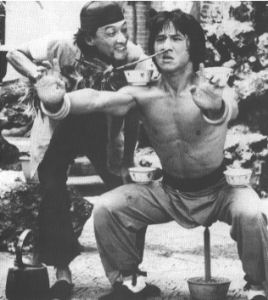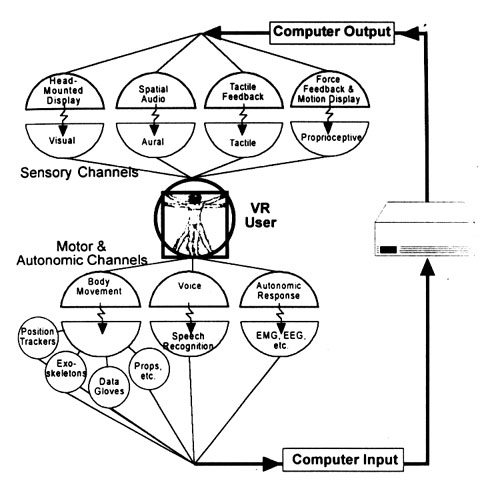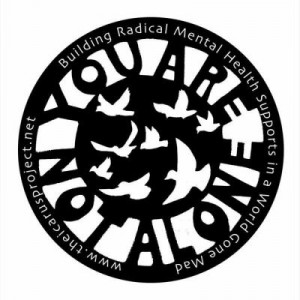Can people change? Can we heal our traumas, internally and interpersonally? Can we adopt better habits, attitudes, and ways of self-management? Can I systematically solve the puzzles in my most deeply ingrained behaviors – the character flaws that have held me back for over a decade? How can learning about computer programming be an avenue towards better regulating my own mental processes? How can computing technologies help people to re-train their minds and live more fulfilling lives?
These are some of the personal questions driving my documentations in this blog.
I am inspired by the process of pro blem-solving in agile software development, and the scrappy attitude of Do-It-Yourself tinkering for dealing with the imperfections of any mechanism. I want to apply these principles to puzzles in my own life, and deeply ingrained patterns of thought/behavior that I have found to be limiting factors on my capacity to learn, create, love, and contribute good work to my communities, with greater consistency, accountability, care, persistence, and resilience.
blem-solving in agile software development, and the scrappy attitude of Do-It-Yourself tinkering for dealing with the imperfections of any mechanism. I want to apply these principles to puzzles in my own life, and deeply ingrained patterns of thought/behavior that I have found to be limiting factors on my capacity to learn, create, love, and contribute good work to my communities, with greater consistency, accountability, care, persistence, and resilience.
Hacker culture is obsessed with the idea of mastery. I want to become a master of the art of hacktivism, but even more importantly, I strive to be a master of myself. The rigorous training, and 功夫 (“kung fu” or hard work) required to attain mastery, is a familiar Chinese trope. Lessons in these Chinese stories of martial arts teachers speak to a kind of training process that can be applied to many different disciplines and areas of life. The journey of the master is a metaphor for a life well-lived – a metaphor that I choose for  my own life.
my own life.
The human brain is a wondrous machine, but it is not an infallible one. In fact, it is quite limited. We have a limited capacity for processing and retaining information, for storing information in a systematic way, so that we can recall that information expediently in connection with other ideas. I want to improve my mind, and become a better learner. For me, learning is the greatest pleasure, and at my core, I have a deep respect for human knowledge, and a desire to contribute to it in some small way, whether through documentation, curation, or innovation.
Beyond book learning, our most essential form learning consists of adapative behaviors that are intended to help us survive. The patterns of behavior that we develop early in our lives are oftentimes so deeply ingrained that it becomes very hard for us to change them, even when we can clearly see that some of these patterns of thought, emotion, decision-making, and action can be maladaptive, and harmful to others or to ourselves. This is because we are not in full control, nor do we have full awareness, of all the functions of our brain; and the conscious mind that agonizes over our plans and best intentions, is just one small part of an ancient architecture that we’ve inherited from our animal ancestors. The most powerful parts of our brain respond not to reason but to the embodied sensations of fear, anger, sadness, love, lust, and manic joy. These emotions endow our lives with rich symbolism and deeply-felt meaning.

In his book, Decartes’ Error, the neuroscientist Damasio warns against the wrongful idea of Dualism, since DesCartes – of thinking of the body and mind, reason and emotion, as separate systems – rather than a coherent biological computer-as-data. (See “Stored Program Computer” in my Notes 1: Intro to CS – what kind of computer are we?)
“…the body as represented in the brain, may constitute the indispensable frame of reference for the neural processes that we experience as the mind; that our very organism rather than some absolute experiential reality is used as the ground of reference for the constructions we make of the world around us and for the construction of the ever-present sense of subjectivity that is part and parcel of our experiences; that our most refined thoughts and best actions, our greatest joys and deepest sorrows, use the body as a yardstick” [(Damasio, 1994, p. xvi)].
At our core, our motivation is driven by emotion, and we simply can’t reason ourselves into any kind of sustained action without developing a more sensitive connectivity to our bodies, where our emotions are triggered and released. Experiences of trauma trigger a fear response, written into the very flesh of the amygdala for the entirety of our lives, wrecking havoc on our memory, nullifying data in our hypothalamus, and short-circuiting our pre-frontal reasoning. I understand that my past experiences of trauma, as well as my memories of joyful reward, push and pull on my perceptions in irrational ways. They are like black holes in the fabric of my mind, which pull everything in their proximity towards these dark paradoxes of non-existence; where I am helplessly defined by what I am not. They are the mysterious points of singularity (cingularity?) in my mind, where my logic and language are not well-behaved. They are difficult, if not impossible to heal completely, and I must learn to navigate my little command-ship around these holes every day of my life, if I hope to function that day.
I’m not equipped to do it alone. My gooey grey matter is no match against the dark matter of my cingulate being. My friends provide wonderful support sometimes, but they can not be there for me all the time. I sink so quickly sometimes, that by the time they realize I’m stumbling, I am often beyond their reach. That is one reason why I am currently turning to the Machine for help regulate my feelings, my thoughts, my attention, my impulses, my will, my behavior, and my habits.
I have designed a Command Center on paper, with a structured way of documenting, processing, timing, and monitoring my thoughts and actions. Based partially on the idea of Mad Maps by the Icarus Project, and partially on the litera ture around PTSD / trauma therapy, cognitive and dialectical behavioral therapy, OCD and anxiety disorders – and partially on theories of gamification and quantified self – I am seeking to build a computer tool to help me better cope with my disability, by functioning as my executive center during times when my own is temporarily impaired.
ture around PTSD / trauma therapy, cognitive and dialectical behavioral therapy, OCD and anxiety disorders – and partially on theories of gamification and quantified self – I am seeking to build a computer tool to help me better cope with my disability, by functioning as my executive center during times when my own is temporarily impaired.
Neuroscientist Eric Kandel wrote, in his book “In Search of Memory” – which echoes the preoccupations of Walter Benjamin upon Baudelaire upon Proust upon Freud – that the best way to heal trauma is to reiterate experiences of “learned safety.” In experiments conducted upon mice, in which Povlovian responses of fear can be induced through repeating patterns of tone and shock, there is sometimes a gradual way to disentangle the association between tone and shock, through teaching the mice to re-associate the tone with feelings of safety and reward. This process is long and arduous, and it doesn’t always work. But for a certain portion of mice and men, re-exposure (or prolonged exposure, as it is called it PTSD treatment) to the traumatic trigger, in an environment of safety and control, can help the brain to overcome the impulse of fear.
I’m working on that.